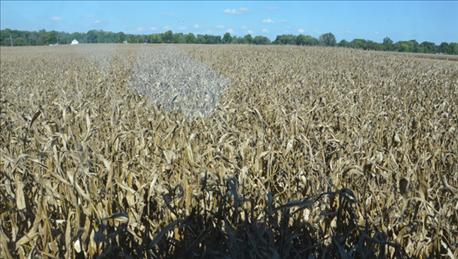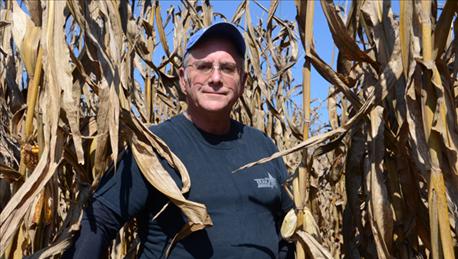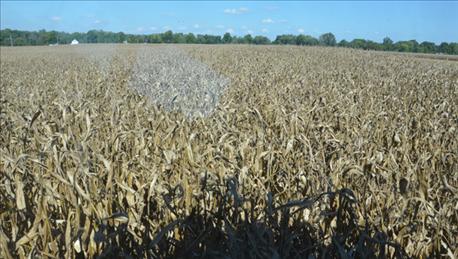
The New Holland 7090 combine drove toward me and stopped. I climbed aboard with Dan Zolman. We headed into a set of rows, and it looked like we were driving into an ocean of corn. The field was planted in twin 20-inch rows.
Dan’s uncle, Don Zolman, Pierceton, purchased a John Deere planter designed to plant in that configuration through a special program offered by Stine Seed two years ago. Harry Stine and his son Myron believe the next big jump in corn yields will come from higher populations. You need hybrids that can perform in high-population situations, but you also need a row spacing that spreads out plants. Their answer is the twin 20-inch row.
Basically, it’s a pattern of twin rows 8 inches apart, with 12 inches to the next row on either side.
Harvest challenge
“We wondered what it would be like to harvest, but it hasn’t been a problem,” Don Zolman says. “We made it through OK last year, and purchased a Capello 20-inch corn head for 2016. It’s designed to handle narrow rows.”
I wanted to see for myself, so that’s why I was in the cab. The combine started through the field, and stalks rolled through in good fashion. It didn’t appear any different than riding a combine with a 30-inch corn head. And this was good corn. The irrigated, continuous corn on sandy ground underlain with gravel was performing well above 200 bushels per acre.

ROW SPACING REQUIRES PLANNING: Don Zolman is trying twin 20-inch rows promoted by Stine Seed. He’s standing in a gap left on purpose to serve as a tramline for field operations.
ROW SPACING REQUIRES PLANNING: Don Zolman is trying twin 20-inch rows promoted by Stine Seed. He’s standing in a gap left on purpose to serve as a tramline for field operations.
Capello introduced a row-independent head earlier this fall. It’s designed to harvest in any direction.
“The company told us [ours] is the same head, only with poly snouts instead of metal snouts,” Zolman says. “We’ve tried it, and you can go crosswise and still do a good job.”
According to Zolman, harvesting thick populations in narrow rows wears out snouts faster. That’s why the newest head has metal snouts. He intends to replace his poly snouts with metal snouts as they wear out.

SEA OF CORN: The view you get from the combine cab in this field of twin 20-inch rows looks like an ocean of corn!
SEA OF CORN: The view you get from the combine cab in this field of twin 20-inch rows looks like an ocean of corn!
Great guidance
The red snout on the corn head is there for a reason. “It lets us line up with the wider rows we left as a tramline,” Zolman says. “We will add a second red one so when both red snouts are in the wider rows, you know you’re in the right place.”
Once lined up, the combine seemed to take care of itself. Although it’s equipped for autosteering, that wasn’t technically what was driving the machine. A set of guidance whiskers from Headsight, Bremen, on one row of the head provided input for steering. It’s plug-and-play, so it fed information into the autosteer system. “It’s very accurate and doesn’t require a subscription fee,” Zolman says.
We didn’t appear to make a bobble through the field. Soon the ocean of brown stalks was a sea of yellow corn in the grain tank behind me.
About the Author(s)
You May Also Like




